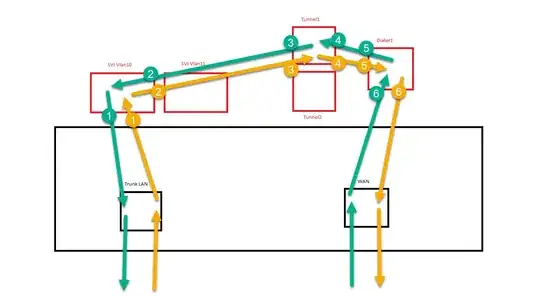I have a simliar question to this one: Access-Lists and VLAN and understanding traffic flow

But my question is concerning service-policies. Have a look at the image above. I triet to make a traffic flow visible. Traffic from the LAN into a VPN connection is marked yellow, the coresponding back traffic from the VPN back to the LAN is green. I have multipe questions regarding traffic flow thru "virtual" interfaces.
- If i put a service-policy input on the SVI Vlan10. Does this affect yellow1 & green2 traffic?
If i put a service-policy output on the SVI Vlan10. Does this affect
yellow2 & green1 traffic?If i put a service-policy input on the tunnel1 interface. Does this affect yellow3 & green4 traffic?
If i put a service-policy output on the tunnel1 interface. Does this affect
yellow4 & green3 traffic?If i put a service-policy input on the dialer1 interface. Does this affect yellow5 & green6 traffic?
- If i put a service-policy output on the dialer1 interface. Does this affect
yellow6 & green5 traffic?
Thanks for clarifying this up.